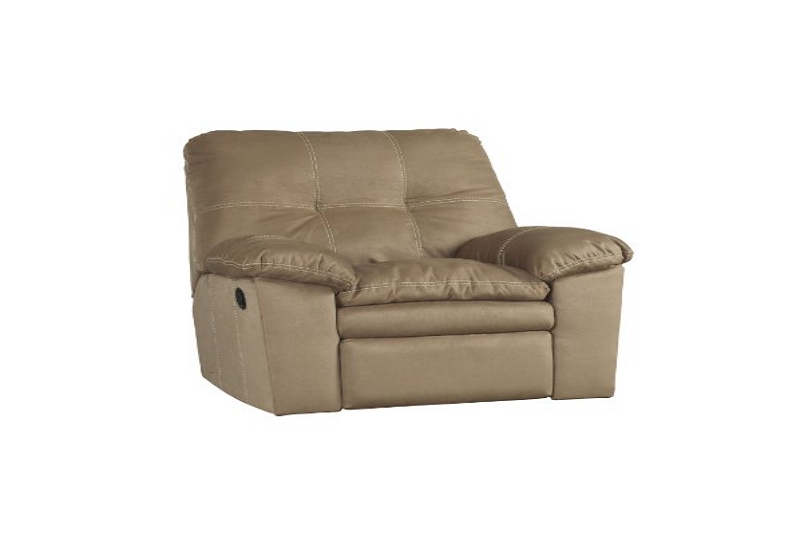A squeaky recliner can be a nuisance. It can also be an embarrassment in front of guests if they are visiting you in your living room and the chair is making loud noises.
The good news is that there are plenty of ways to prevent this from happening! Read on for some tips and techniques to stop a recliner from squeaking.

Steps on how to Stop a Recliner from Squeaking
Step 1. Get a can of compressed air and spray in the crevices where the chair moves.
Step 2. You might also want to consider spraying some lubricant, such as WD 40 into those areas.
Step 3. Spray silicone on dry spots that are causing friction or rubbing against something else. This will help reduce any sound that is created.
Step 4. Add a layer of felt to the bottom of your recliner. This will help with both friction and sound.
Step 5. You can also find plastic “feet” that you can place on the floor underneath the chair, which are made for this purpose. They offer protection from hard surfaces and noise as well!
Step 6. Try putting a rubber mat under the chair to help reduce the noise it makes.
Step 7. Once you have solved your problem, make a point of inspecting your chair regularly and reapplying anything that is starting to wear out.
What is Squeaking in Recliner?
When a recliner squeaks, it means that the chair is rubbing against something else or there are spots where the chair is moving around. This movement can lead to friction which creates noise, as well as wear and tears on the chair itself.
The first thing you should do when you have a problem with your recliner making noises while being used is to inspect the chair. Look for any spots that are rubbing against another surface or parts of the furniture where there might be some wear and tear on those surfaces.
Recliner squeaking can also happen because someone may have spilled something inside your recliner, which has seeped down to a lower level in between cushions or staining the fabric.
The best way to deal with this is by checking for any tell-tale signs of a spill and, if you notice one, take it as an immediate cue that you need to get up and start looking around for what spilled in your recliner.
If there are no leaks or spills which may have caused the noise but you can’t pinpoint the root cause of the squeaking, there are some things you should try.
Tighten all screws and bolts on your recliner; make sure that everything is fully tightened to eliminate any loose parts that may be irritating against other
How to Prevent Squeaking in Recliner Chairs
#1. It’s a common complaint of many recliner chairs—they squeak! The first thing to do is identify the source of the problem. If it sounds like you have something inside your recliner, which has seeped down to a lower level in between cushions or staining the fabric.
#2. If the noise persists after a thorough inspection and no-spill exist, it may be time to contact your recliner manufacturer for assistance.
#3. Even if you find that there’s nothing wrong with your chair, sometimes just tightening up any screws in the back of the chair can eliminate squeaks as well as
#4. No liquid inside of the chair. Then, check around for what spilled in your recliner. If there are no leaks or spills which may have caused the noise but you can’t pinpoint the root cause of the squeaking, there are some things you should try: tighten all screws and bolts on your recliner; make sure all the chair’s parts are assembled correctly; and lubricate all moving joints.
#5. If you find that there is still noise, it could be your recliner mat. If this is the case, try flipping or rotating the mat to see if turning it will fix the problem. You can also add an extra layer of padding by using a different mat or moving your current one to the spot where you feel it is needed.
How to Care for a Recliner
#1. Vacuum your recliner regularly. This will get rid of dust and pet hair that can cause the chair to make noise when you move it around. Remember to use an upholstery attachment for the best results!
#2. Inspect each part of your recliner before moving it, especially if someone has been sitting in it.
#3. Use a soft brush, like one used for dusting furniture, on your upholstery if there is an oily spot left behind from cooking oil! If this doesn’t work, try using a dry cloth with a spot remover.
#4. Go over the recliner’s fabric with a damp cloth to remove any spots or spills that may have occurred while you were away.
#5. Use a soft brush, like one used for dusting furniture, on your upholstery if there is an oily spot left behind from cooking oil! If this doesn’t work, try using a dry cloth with a spot remover.
#6. For best results, vacuum your recliner at least once every week to remove dust and pet hair that can cause the chair to make noise when you move it around. Remember to use an upholstery attachment for best results!
How to Clean Recliner
- Never put anything wet on your recliner.
- Never pour water, soda or any other liquid onto the fabric of a chair that is not waterproof! This will ruin it. Instead, use a damp cloth to remove dirt and spills from upholstery. Do NOT rub though as this may cause damage when dry again.
